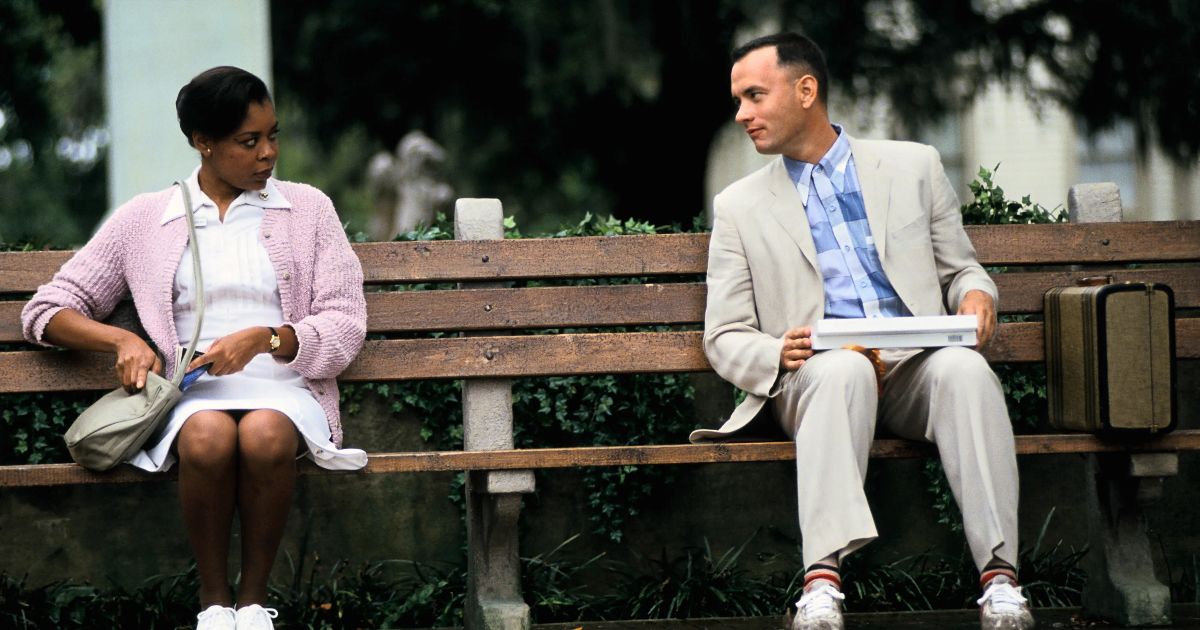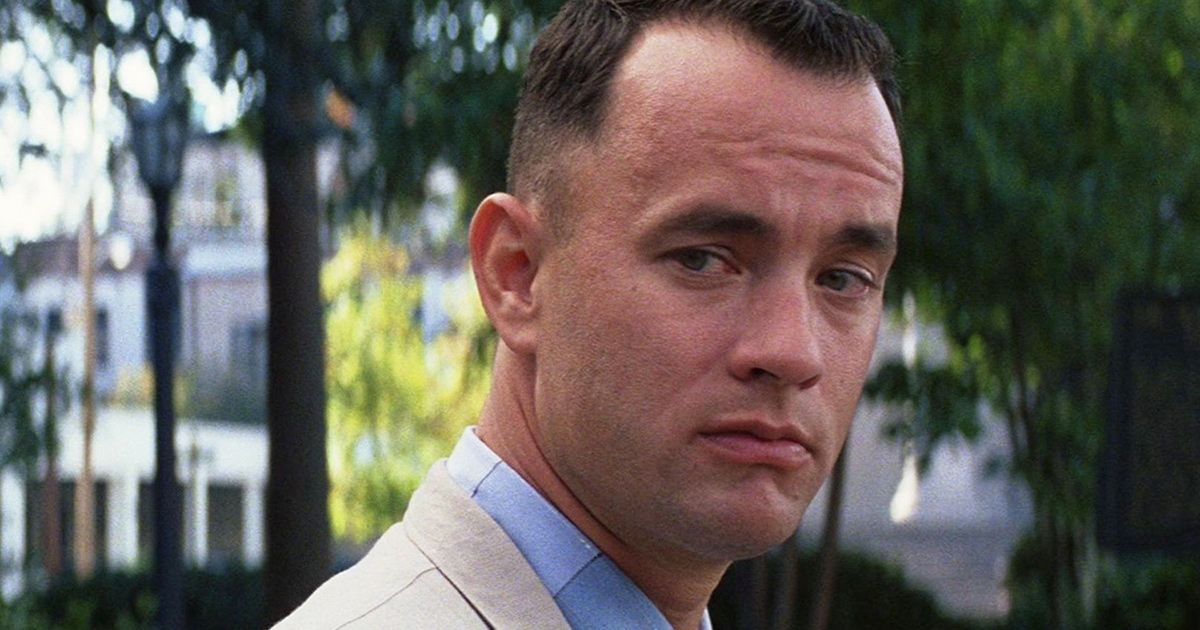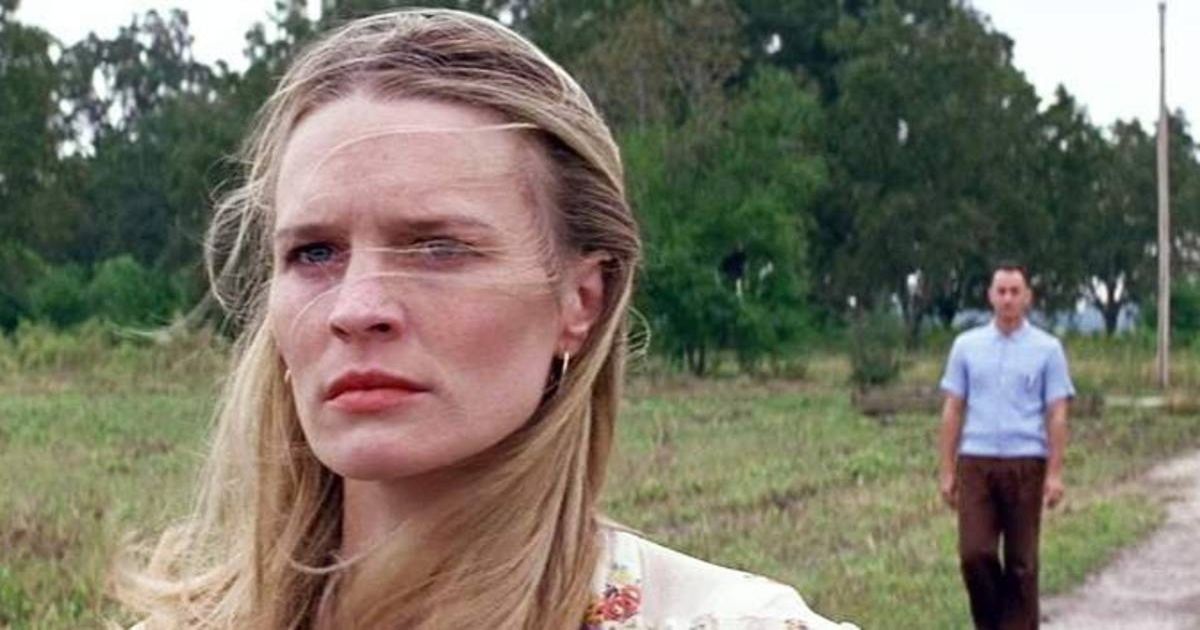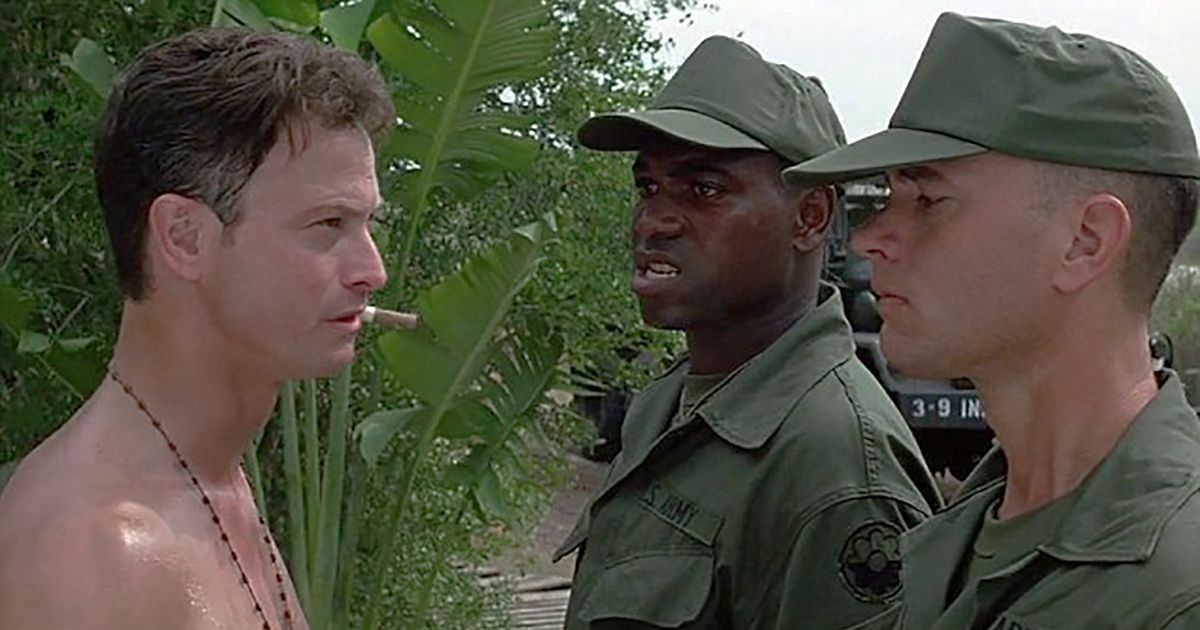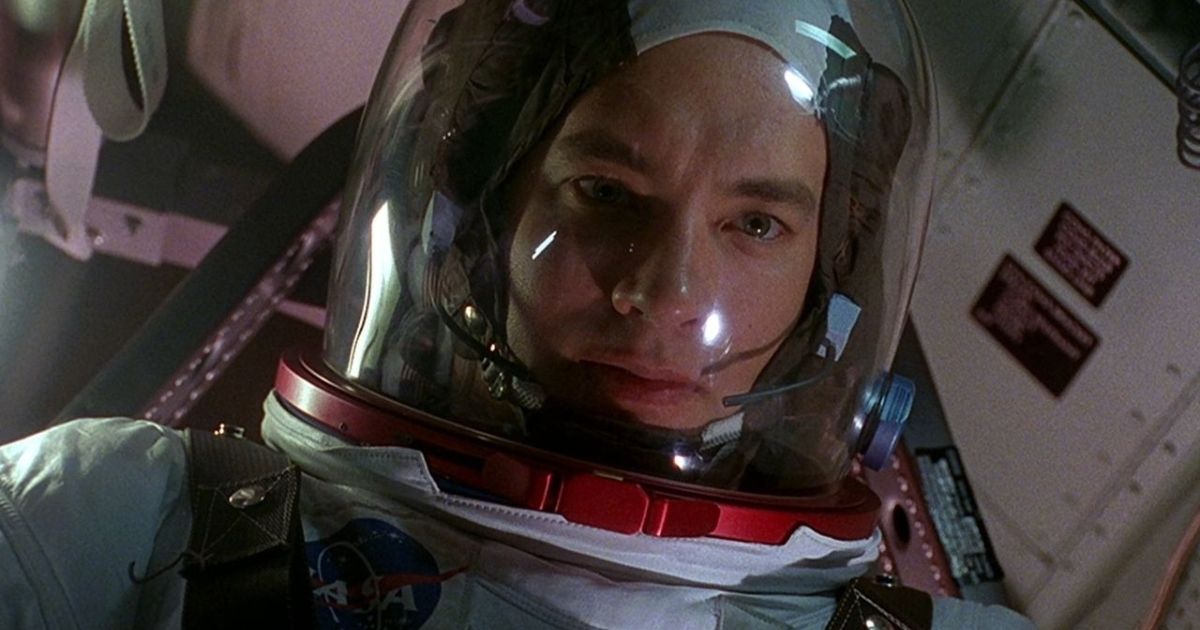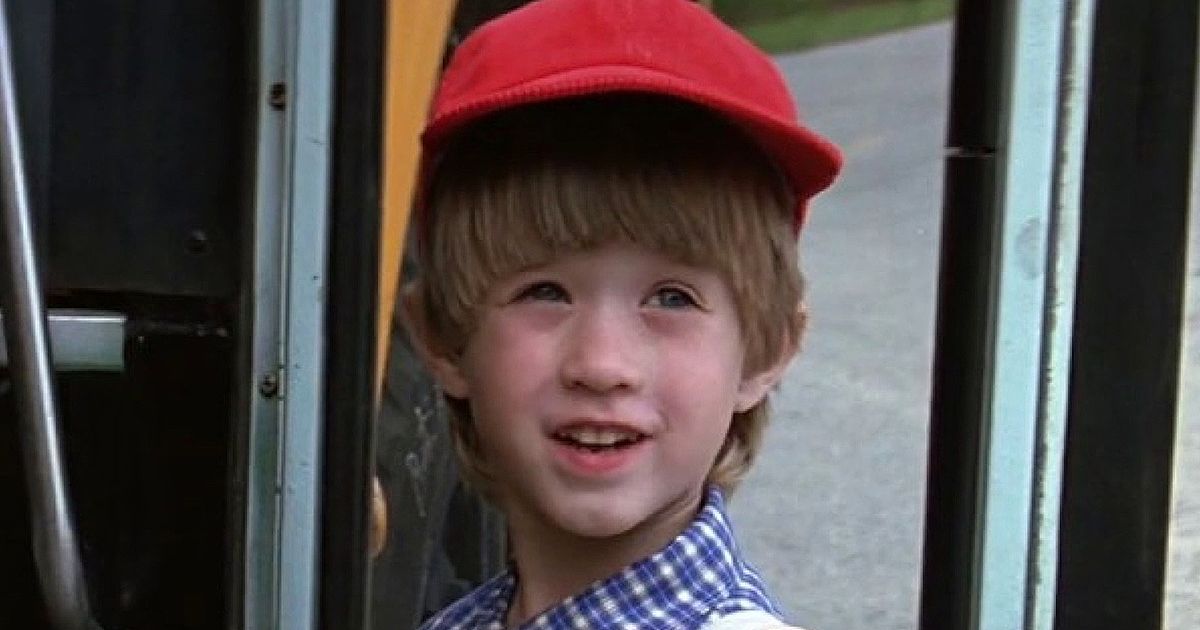Winston Francis Groom, Jr. was already a noted journalist and Pulitzer-nominated author when his novel Forrest Gump was published in 1986. The book received mixed reviews and sold tens of thousands of copies, but was largely forgotten after several years. Meanwhile, Tom Hanks was a well-known comic actor in a bit of a career slump, with two flops in 1990, Joe Versus the Volcano and The Bonfire of the Vanities. Screenwriter Eric Roth had been in the business since the 1970s, and though he had worked regularly, hadn't found much success. All their fortunes were about to change.
Roth's adaptation of Groom's novel got the attention of both director Robert Zemeckis, best known at the time for the Back to the Future trilogy, and Hanks, who signed on immediately. The resulting film was critically acclaimed and a box office smash. It won six Academy Awards, including Best Adapted Screenplay for Roth, Best Director for Zemeckis, and Best Actor for Hanks. Groom's book shot back up the charts, selling millions of copies, and was republished in dozens of languages. But readers quickly discovered that it was a very different story in several key ways. Here are the major differences between the Forrest Gump novel and its movie adaptation.
Forrest
Forrest Gump himself is very different in Groom's novel, both physically and in his abilities and actions. Tom Hanks has an average build, is tall but not overly so, and is certainly not overweight or particularly muscular. In the book, he is much larger, 6' 6" high and weighing 242 pounds at age sixteen, and thus a natural choice to play high school football, which he does. The author later said he had John Goodman in mind as he was writing. There is no "run, Forrest, run" scene in the novel because he never has braces or any issues with his legs. In fact, he attacks his bullies rather than running away.
In both the film and the novel, Forrest is a product of Mobile, Alabama. But the filmmakers wanted to make the character a likable innocent, and thus had to make some pretty big changes. First, the character constantly curses in the book, sometimes making offensive, race-based comments and slurs, seemingly not knowing any better. The story opens with a quote about chocolates, but not the one movie audiences remember: "Bein a idiot is no box of chocolates." But another catchphrase that appears repeatedly in the book did make it into the film: "I gotta pee."
Also in the novel, Forrest is a savant, surprisingly gifted in subjects like math and physics. And though he does take up ping-pong, he is also a world-class chess player. He has many jobs, including working in movies and as a wrestler. Finally, Groom made Forrest more self-centered, and Jenny even criticizes him for smoking too much marijuana!
Jenny
Jenny's life in the book was noticeably changed for the movie, too. While Forrest does meet her in first grade and walks her home, becoming friends, Jenny is not being abused by her father. And when they do meet again in college, playing together in a folk band, Jenny seems to be mainly attracted to Forrest physically. But Forrest flunks out and is drafted and sent to Vietnam, and they both move on. Indeed, while Jenny does disappear from the film for long stretches, she is even less present in the novel and is not a particularly well-developed character. In any case, Forrest seems to take her for granted, and Jenny ultimately leaves him.
Lieutenant Dan and Bubba
Actor Gary Sinise had a star-making turn as Lieutenant Dan in the film, receiving nominations for multiple awards, including an Oscar. The character in the novel is similar to the one we got on screen, at least to start. Forrest meets him in Vietnam, where they are both wounded, and Dan loses his legs. But unlike the movie, Lieutenant Dan is not involved in Forrest's shrimp boat business. When Forrest finds him again later in the book, he is homeless.
In an even bigger change, the character of Bubba in the book is white! Forrest meets him in school, not in the Army, but they do go to Vietnam together, and Bubba dies there, as in the film. And it is still Bubba's memory that inspires Forrest to create a successful shrimping business, though he eventually turns it over to Bubba's family, rather than Lieutenant Dan. But Dan sticks with Forrest until the end of the novel, with the two moving to New Orleans shortly before the story ends.
Astronauts, Orangutans, and Cannibals
In order to make a movie less than 2.5 hours long, much of the material from the book had to be cut. The biggest plot line omitted involved Forrest being recruited by NASA to be an astronaut. He trains with Major Janet Fritch, who is to be the first woman in space, along with a female orangutan named Sue, who is accidentally replaced by an aggressive male, also named Sue. This Sue is responsible for crashing their spacecraft into the jungles of New Guinea. Here they must contend with cannibals, but Fritch falls in love with one, while another teaches Forrest how to play chess. Needless to say, none of this made it into the movie script, but Hanks did play an astronaut in his next major role, as Commander Jim Lovell in Apollo 13.
Little Forrest
In the novel, as in the film, Forrest finally learns that Jenny has a son, and he is the father. However, in Groom's version, Jenny does not have AIDS. She lives and Forrest is content letting Jenny and another man, her new husband, raise the boy. Having given all his money away, Forrest, along with Lieutenant Dan and Sue, travel the south, settling in New Orleans. They work as street performers, essentially begging for a living. The movie ended on a somewhat more hopeful note, with Forrest dutifully raising his son.
With the film's massive success, there was inevitable talk of a sequel. It never happened, though the team is reportedly working together on a new movie. Winston Groom, on the other hand, struck while the iron was hot, releasing Gump & Co. in 1995, just a year after the film. The book continues Forrest's adventures through the 1980s and early '90s and even acknowledges the movie. It received mixed reviews. The movie also inspired Rusty Pelican Restaurants to partner with Paramount to create a real-life Bubba Gump Shrimp Company restaurant in Monterey, California, in 1996, eventually spawning dozens of locations around the world.
Most recently, Forrest Gump has gotten a remake in India. Screenwriter Atul Kulkarni spent nearly two decades working to make Laal Singh Chaddha a reality. Officially announced in early 2019, the film faced repeated delays, eventually debuting in August 2022 to disappointing box office results. Still, it proves continued interest in the story, even outside the U.S., whether on the page or on the big screen.

